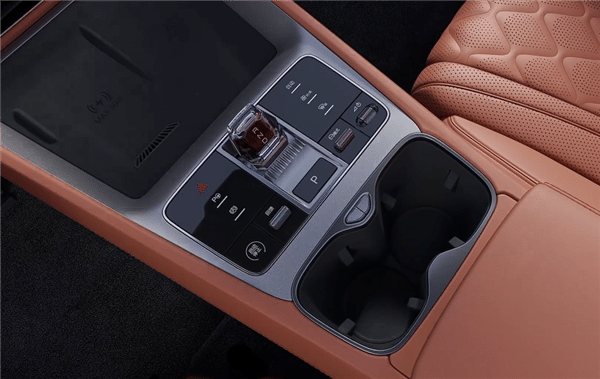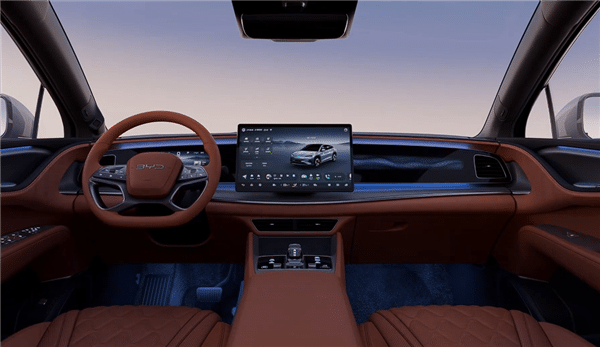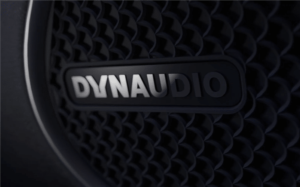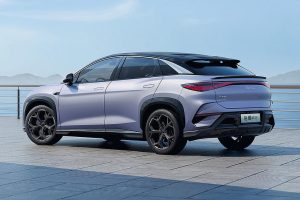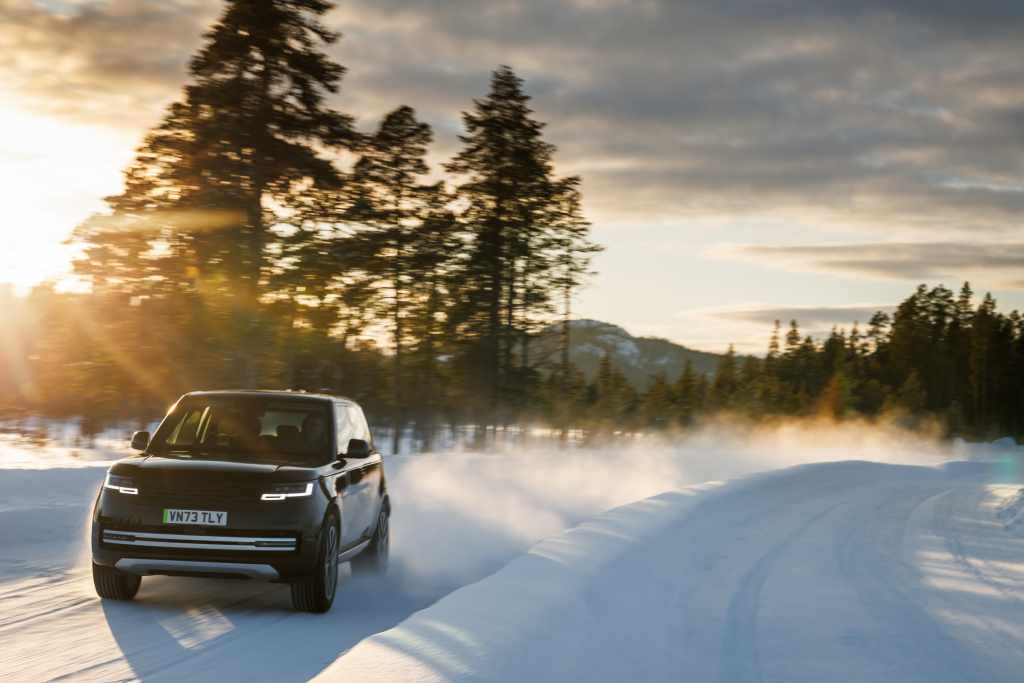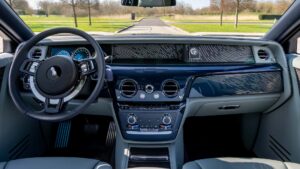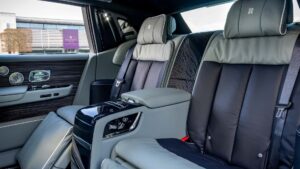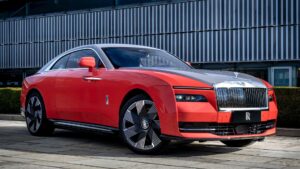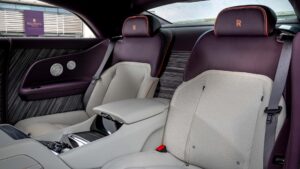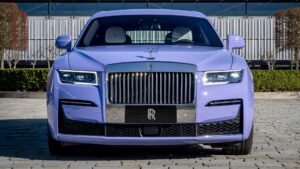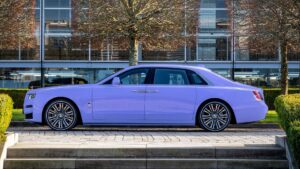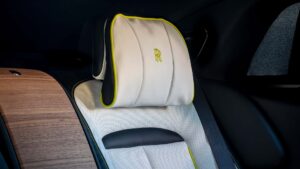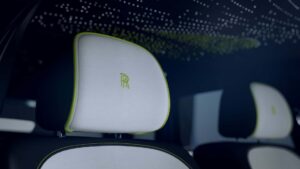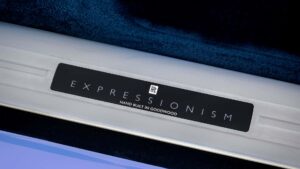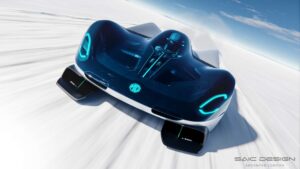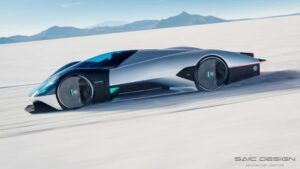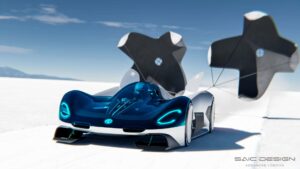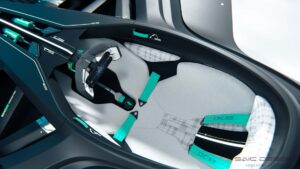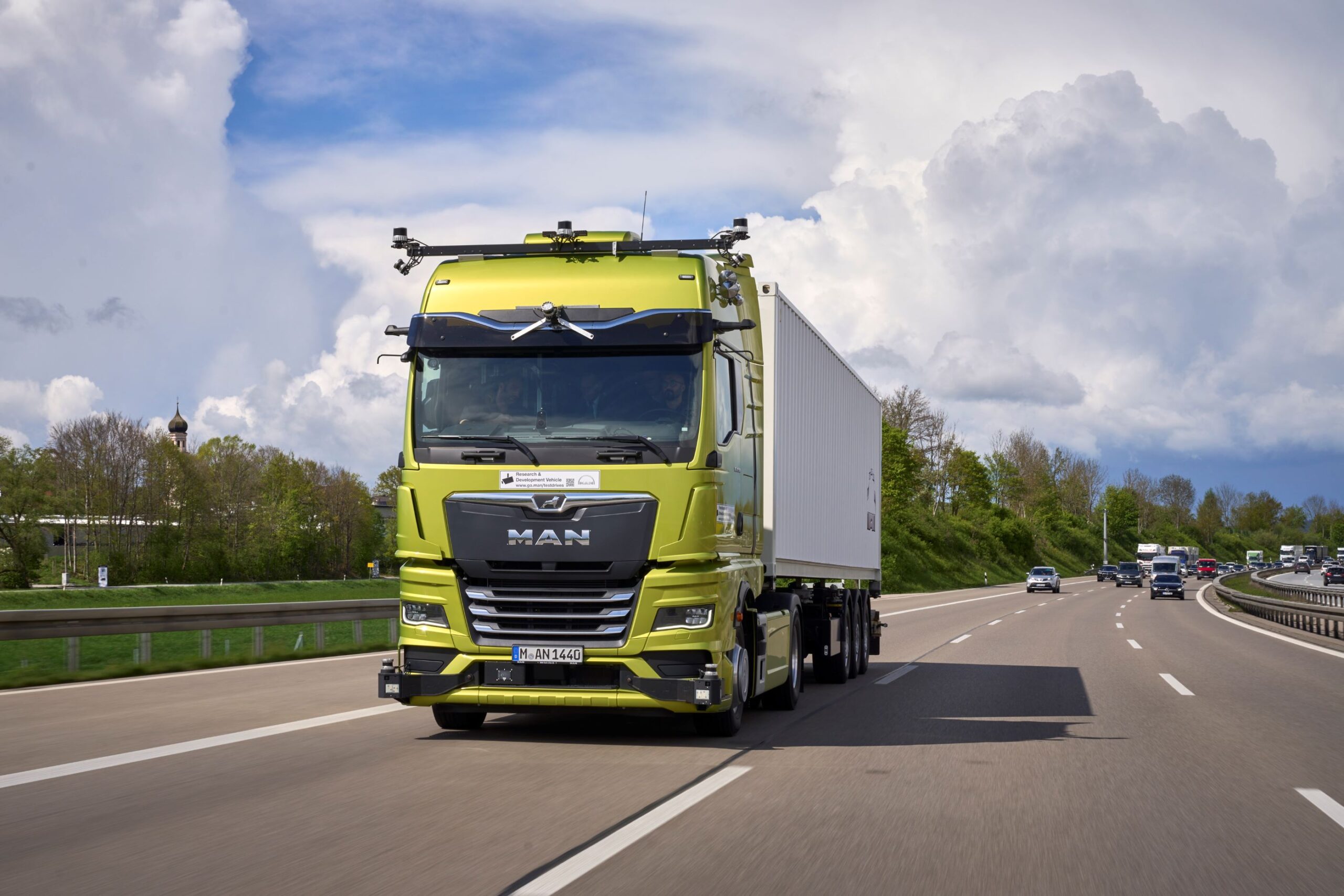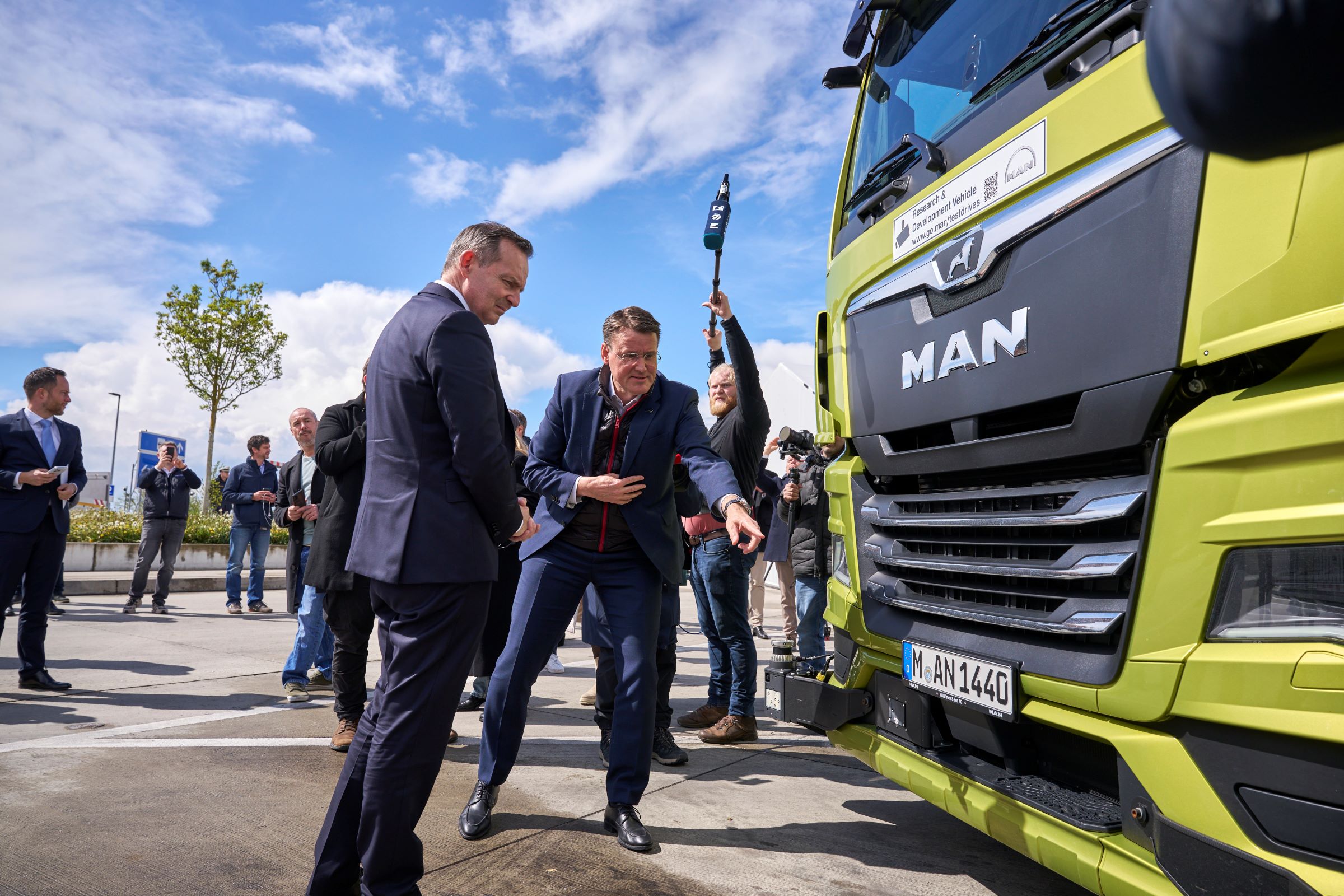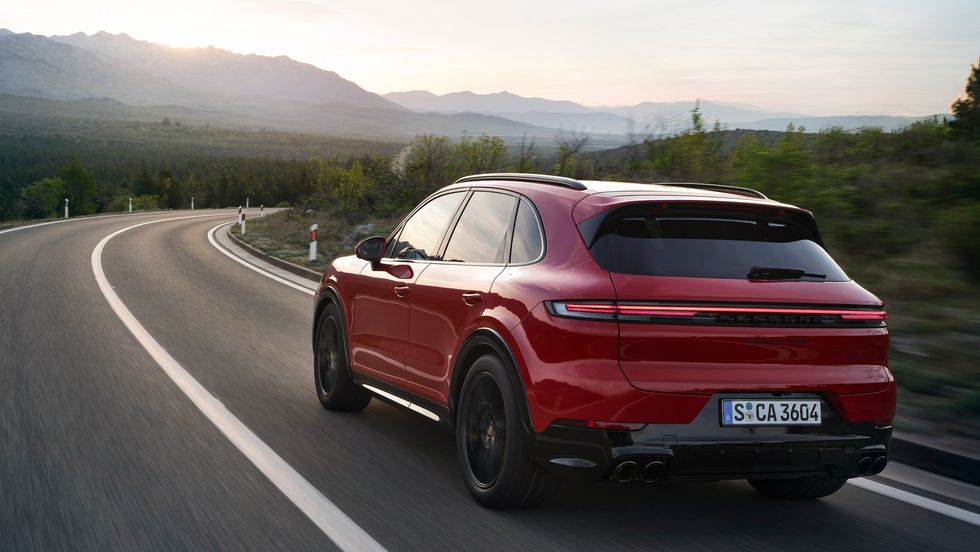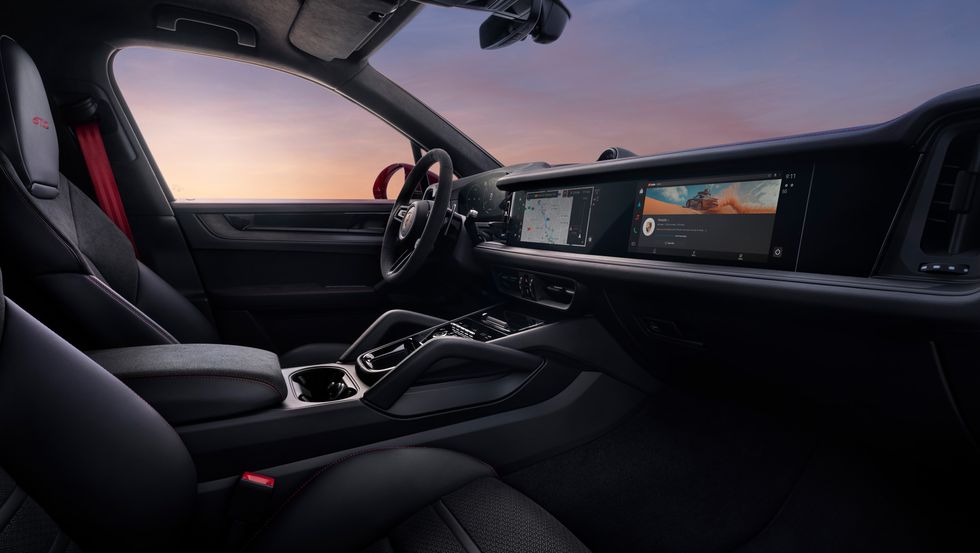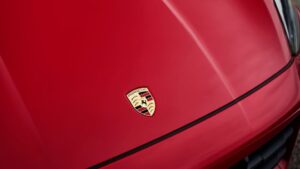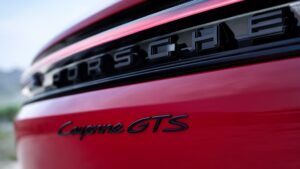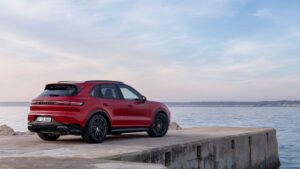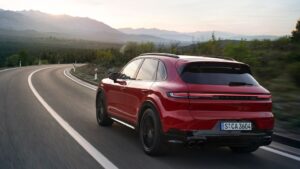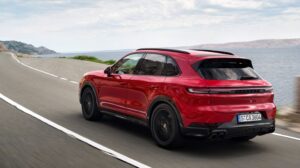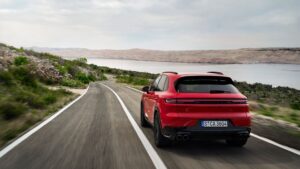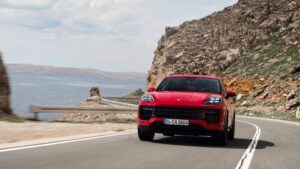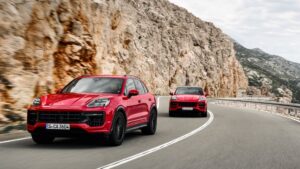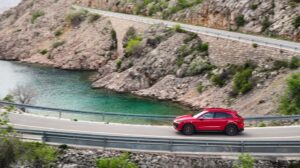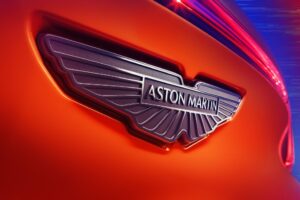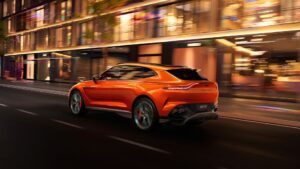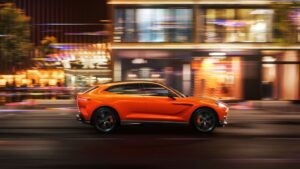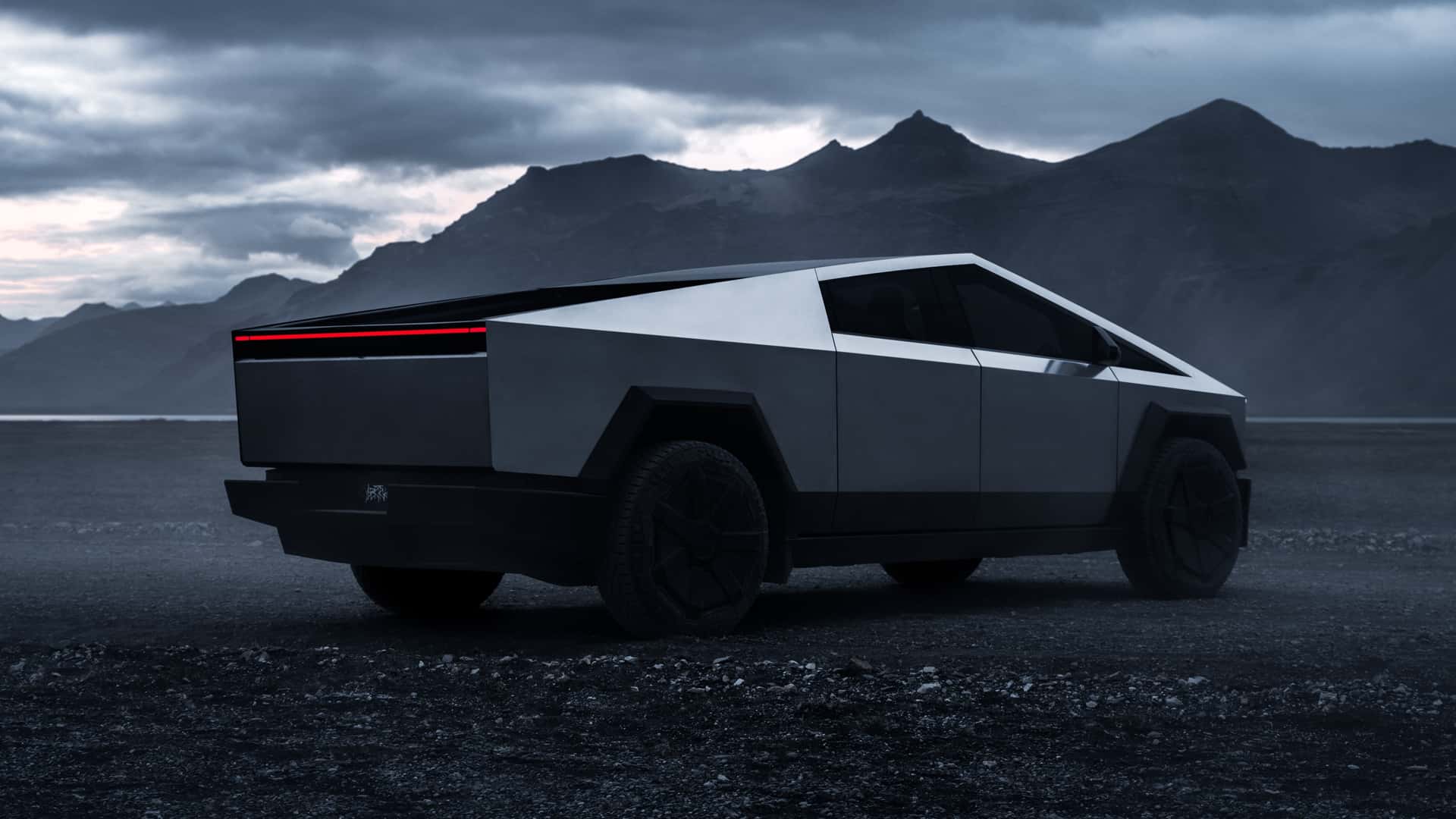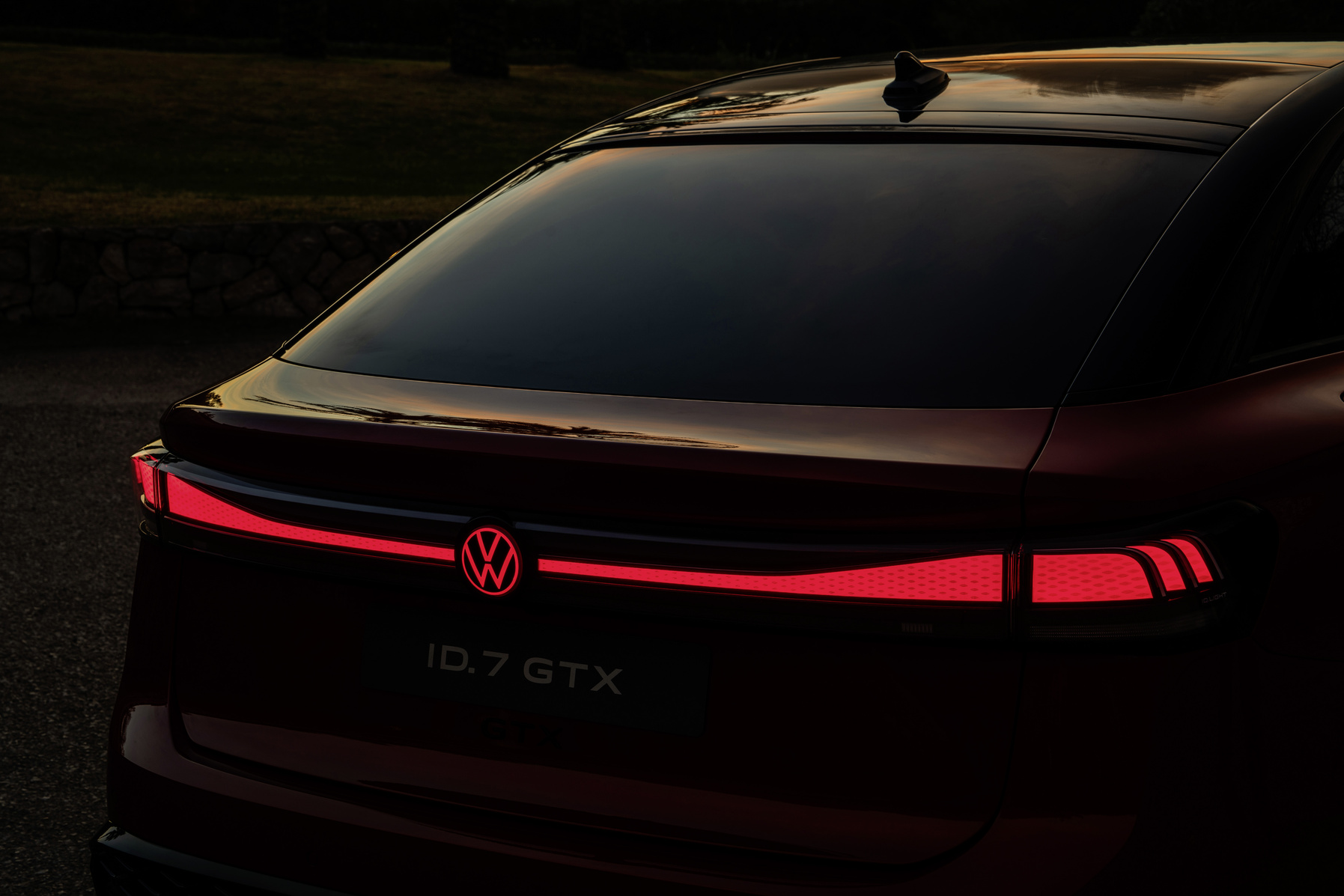BYD unveiled official interior images of its Sea Lion 07, positioning it as a direct competitor to the Tesla Model Y. With its listing by the Ministry of Industry and Information Technology (MIIT) months ago, the car is likely poised to commence sales, potentially with an announcement at this week’s Beijing Auto Show.
The Sea Lion 07 appears to be a refined iteration of the BYD Song L, albeit now categorised into the Ocean and Dynasty series and marketed separately. Slightly smaller than the Song L, the Sea Lion 07 measures 4830mm in length, 1925mm in width, and 1620mm in height, riding on a wheelbase of 2930mm.
Interior snapshots reveal a surprisingly opulent cabin, echoing the design language of the Qin L. While the instrument screen seamlessly integrates into the flowing dashboard, BYD’s distinctive floating rotatable screen remains a focal point in the centre of the dash. The four-spoke steering wheel is adorned with an array of buttons, and the centre console features a crystal gear lever surrounded by additional controls.
Luxury abounds in the Sea Lion 07, with leather perforated seats complemented by leather-wrapped door panels, steering wheel, and other touch points. The seats boast heating, ventilation, and massage functions, and a Dynaudio sound system enhances the audio experience.
Buyers can opt for either rear-wheel drive or all-wheel drive variants. Base models are equipped with a 227hp peak power motor, offering a top speed of 210km/h. Higher-spec versions feature a more potent motor, delivering 308hp peak power and enabling a top speed of 225km/h. The 4WD model likely incorporates a 214hp motor on the front axle alongside the 308hp motor, maintaining a top speed of 225km/h while potentially achieving sub-4-second acceleration.
While battery capacities remain undisclosed, the Sea Lion 07 is expected to utilise BYD’s blade battery technology, benefiting from CTB integration. The vehicle is equipped with front double wishbone suspension, rear five-link suspension, and the DiSus-C intelligent damping control system. Additionally, it is anticipated to feature BYD’s ‘Eye of the Gods’ intelligent driving system, adding to its allure.





